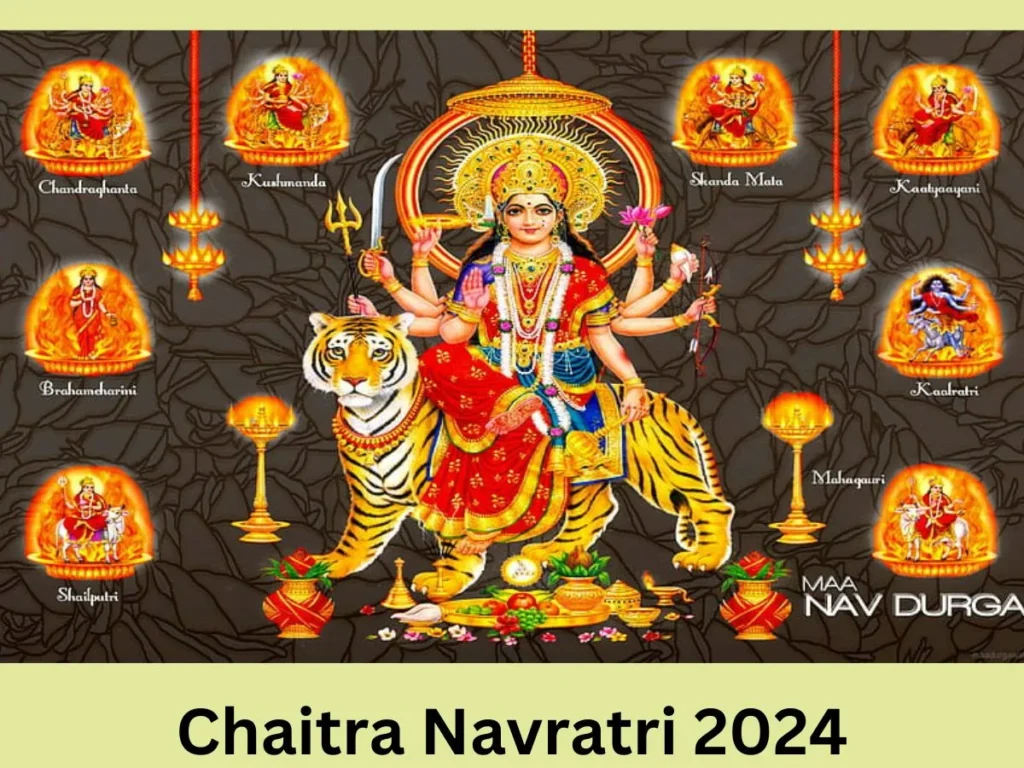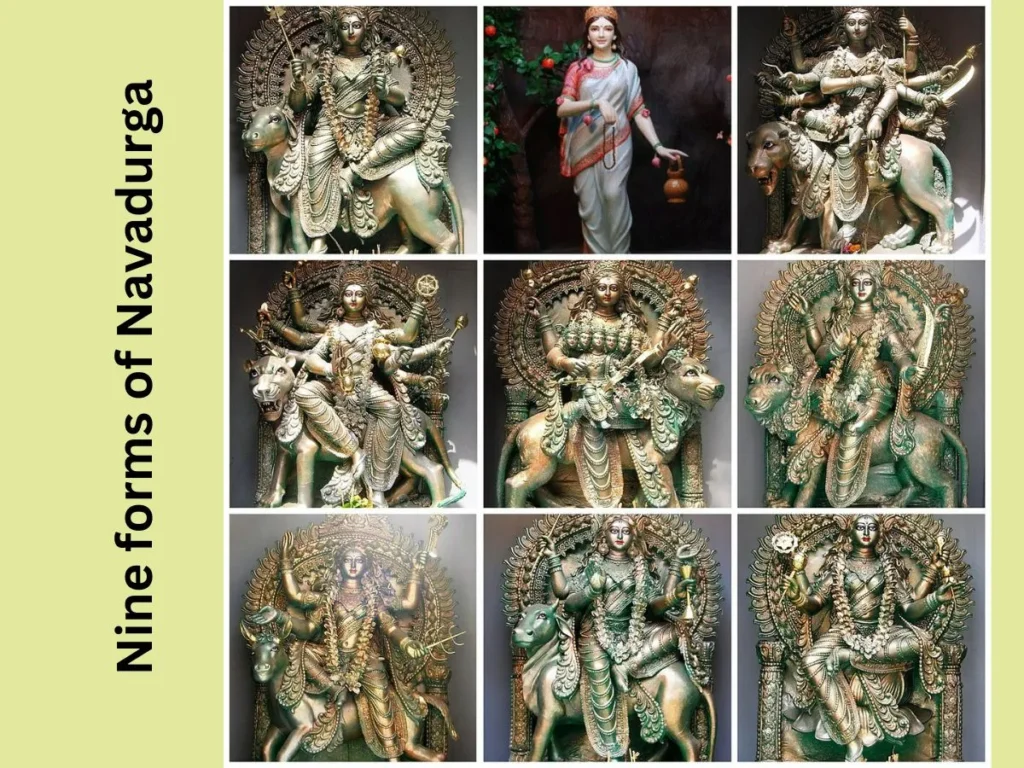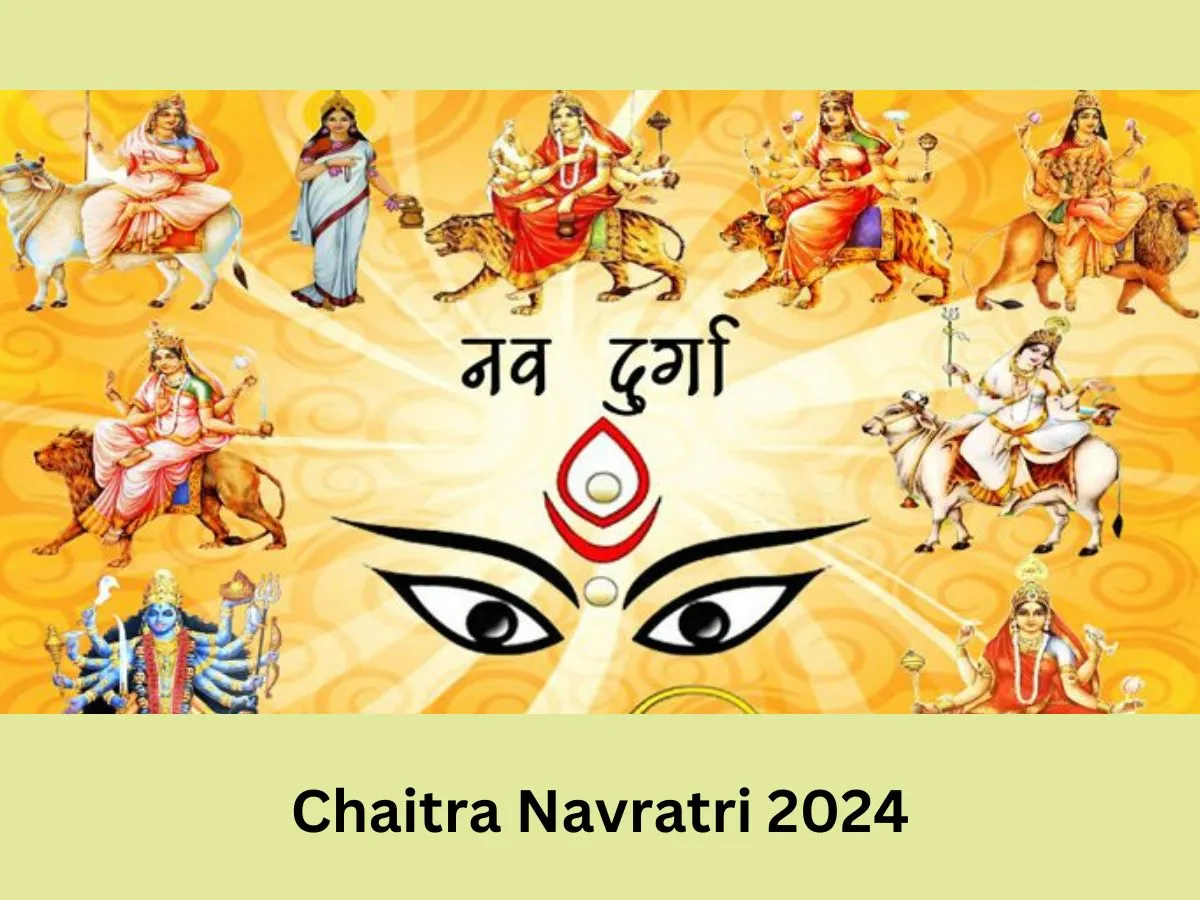Table of Contents
ToggleUnveiling the Essence of Chaitra Navratri 2024
Chaitra Navratri 2024, observed from April 9th to April 17th in 2024, is a nine-day Hindu festival heralding the spring season. It’s a vibrant celebration honoring the nine forms of Goddess Durga, the embodiment of feminine power and the destroyer of evil. This festival transcends mere religious significance, weaving together mythology, social customs, and cultural traditions.
Ushering in spring, Chaitra Navratri is a nine-day Hindu festival honoring the nine forms of Goddess Durga. Celebrated in April, it’s a vibrant tapestry woven with mythology, social customs, and cultural traditions. Devotees observe fasts, recite mantras, and perform pujas, seeking blessings and spiritual growth. Each day is dedicated to a specific form of Durga, representing different aspects of her power – from the grounded foundation of Shailputri to the fierce warrior spirit of Katyayani. The festival transcends religious boundaries, fostering a sense of community through prayer gatherings and vibrant celebrations like Dandiya Raas in Gujarat. It’s a time for social connection, strengthening family bonds, and reviving time-honored traditions. Chaitra Navratri is a multifaceted celebration, reminding us of the battle between good and evil, offering hope for renewal, and showering us with the blessings of the divine feminine.

Why We Celebrate Chaitra Navratri
Chaitra Navratri holds immense importance for several reasons:
- Mythological Significance: It commemorates the epic battle between Durga and the demon Mahishasura. Durga’s victory symbolizes the triumph of good over evil, and the nine days represent the various stages of this war.
- Spiritual Renewal: Devotees observe fasts, perform pujas (prayers), and recite mantras, seeking spiritual purification and blessings from the divine feminine.
- Cultural Celebration: Chaitra Navratri is a vibrant spectacle across India. Homes are adorned, communities gather for prayers, and some regions witness spectacular Dandiya Raas, a folk dance form.

The Nine Divine Forms of Durga
Each day of Chaitra Navratri is dedicated to a specific form of Durga, highlighting different aspects of her power:
- Day 1: Shailputri (Daughter of the Mountains) – symbolizing foundation and grounding.
- Day 2: Brahmacharini (One who observes celibacy) – representing self-discipline and spiritual austerity.
- Day 3: Chandraghanta (One who has a moon-shaped ornament on her forehead) – signifying inner peace and tranquility.
- Day 4: Kushmanda (The creator of the universe) – representing the source of creation and life force.
- Day 5: Skandamata (Mother of Skanda, the god of war) – symbolizing maternal love and strength.
- Day 6: Katyayani (The warrior goddess) – representing courage, power, and the fight against injustice.
- Day 7: Kalaratri (The destroyer of evil) – signifying the ferocious aspect of Durga, destroying negativity.
- Day 8: Maha Gauri (The radiant white one) – representing purity, serenity, and forgiveness.
- Day 9: Siddhidatri (The giver of success) – signifying accomplishment and the culmination of spiritual practices.
Regional Celebrations of Chaitra Navratri
Across India, Chaitra Navratri is celebrated with unique regional flavors:
- Gujarat and Maharashtra: Witness the energetic Dandiya Raas, a vibrant folk dance performed throughout the nights.
- Punjab and Haryana: People observe a strict vegetarian diet and participate in community prayers.
- Eastern India: Elaborate puja rituals are performed, and pandals (temporary shrines) are erected to house Durga idols.
- Southern India: The festival is known as “Vasantha Navaratri” and includes decoration with colorful kolams (floor art) and special offerings to the goddess.
Social and Cultural Significance
Chaitra Navratri transcends religious boundaries. It fosters a sense of community as people come together for prayers and celebrations. It’s also a time for social gatherings, strengthening family bonds and reviving traditional customs.
Conclusion
Chaitra Navratri 2024 is a multifaceted festival. It’s a time for spiritual introspection, a celebration of feminine power, and a vibrant cultural expression. It reminds us of the eternal struggle between good and evil, while offering hope, renewal, and the blessings of the divine feminine.
